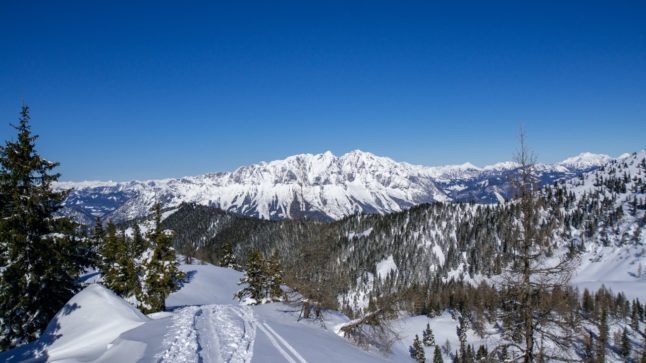The heavy snowfall in the south of Austria led to malfunctions at almost 190 transformer stations in western Styria during the night on Tuesday. About 4,000 households were without power Tuesday morning, according to Urs Harnik-Lauris, spokesman for Energie Steiermark.
Additionally, 5,000 households were affected in Lower and Central Carinthia said the provincial energy supplier Kelag.
In Carinthia, the snowfall had subsided during the night, but still, a few centimetres of snow were added in places Tuesday morning, ORF reported. As a result, schools in the entire district of Völkermarkt and the municipalities of Lavamünd and Preitenegg (district of Wolfsberg) remained closed on Tuesday since the way to school was sometimes simply too dangerous, the authorities said.
READ ALSO: Energy crisis: What to do in case of a power outage in Austria
About 2,100 firefighters have been on duty in Carinthia since Monday because of the heavy snowfall. In total, there were 570 operations, mainly due to fallen trees and stuck cars and trucks. In the district of Völkermarkt alone, there were 160 operations.
Starker Schneefall heute in Teilen Kärntens & der Steiermark. 20cm Neuschnee jetzt in Feistritz ob Bleiburg, 14cm in Völkermarkt, 6 in Klagenfurt.
Im Lavanttal ist der Schnee schon in Regen übergegangen & gerade im Übergangsbereich sind Schneebruch & kleine Überflutungen möglich. pic.twitter.com/9qW7O395lv— Manuel Oberhuber (@manu_oberhuber) January 23, 2023
Styria also heavily affected
The snow continued to fall in southern and western Styria on Tuesday.
Since Monday, it has snowed continuously at higher altitudes.
The situation in west Styria came to a head early on Tuesday morning when countless trees could no longer withstand the weight of the snow and fell, damaging numerous power lines.
READ ALSO: What is Austria’s official emergency-warning phone app and do I need it?
More than 4,000 households were without power on Tuesday morning, said Urs Harnik-Lauris of Energie Steiermark: “The situation has worsened significantly. All parts of western Styria are affected.”
Temperatures dropped significantly in the last few hours, he added.
“Rain has turned into heavy snow, causing trees to fall. At the moment, the centre of damage has moved from Carinthia to western Styria”, according to Harnik-Lauris.
READ ALSO: Who to call and what to say in an emergency in Austria
Weather forecast
On Tuesday it was forecast to rain in the south and the centre of the country until well into the afternoon, according to Austria’s meteorologic institute ZAMG.
The snow line – above which rain turns to snow was forecast to be between 600m and 900m altitude.
Forecasters did not predict any snowfall for the region on Wednesday with parts of Carinthia set to see some sun.




 Please whitelist us to continue reading.
Please whitelist us to continue reading.
Member comments